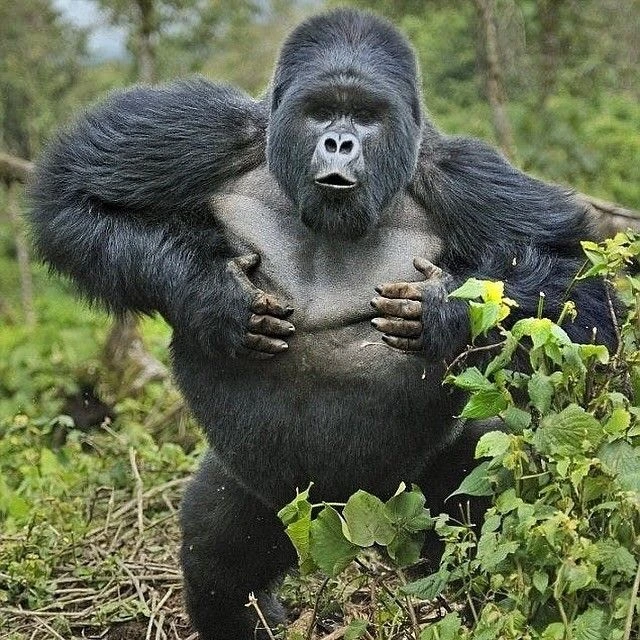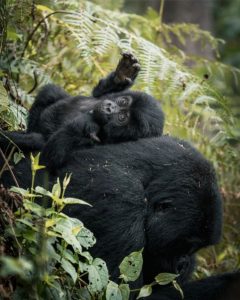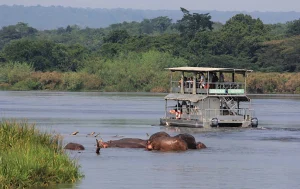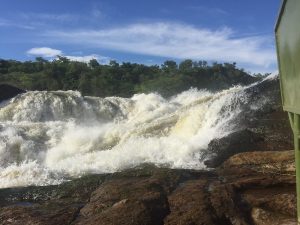Gorilla trekking in Bwindi Impenetrable Forest offers an unparalleled wildlife experience, allowing travelers to encounter endangered mountain gorillas in their natural habitat. While the journey rewards adventurers with unforgettable sights, many ask: Is gorilla trekking in Bwindi difficult? What Is Gorilla Trekking in Bwindi? Is Gorilla Trekking in Bwindi Impenetrable Forest Difficult?
Bwindi Impenetrable Forest National Park, located in southwestern Uganda, covers approximately 331 square kilometers of dense tropical rainforest. The park boasts one of the largest populations of mountain gorillas globally and attracts thousands of visitors annually for gorilla trekking. During the trek, visitors navigate through thick forest trails, guided by expert trackers, to observe gorilla families in their natural habitat.
The trekking experience varies depending on the gorilla group assigned, as their habitats range across different forest zones with varying terrain challenges. Bwindi’s unique biodiversity and challenging environment make it a prime destination for ecotourism and conservation.
How Physically Demanding Is Gorilla Trekking in Bwindi?
Gorilla trekking in Bwindi requires moderate to high physical fitness. The trek can last anywhere from 2 to 8 hours or more, depending on the gorillas’ location and movements on a given day. Hikers navigate uneven, sometimes slippery trails, ascend and descend steep slopes, and maneuver through dense undergrowth.
Because the forest is dense and rugged, trekkers face obstacles such as thick vegetation, fallen logs, and muddy patches. The altitude in Bwindi varies between 1,160 meters to 2,607 meters above sea level, which can impact stamina, especially for those not acclimated to higher elevations. The trek tests endurance, balance, and strength, but many find it achievable with proper preparation and pacing.
What Types of Terrain and Weather Conditions Do Trekkers Encounter?
Bwindi Impenetrable Forest presents diverse terrain, including steep hills, valleys, and densely vegetated forest floors. The trail surface can be rocky or muddy, especially during the rainy seasons (March to May and September to November). Slippery trails and occasional streams crossing add to the physical challenge.
The weather remains humid year-round, with temperatures averaging between 15°C and 25°C (59°F to 77°F). Rain showers are frequent and sometimes heavy, making waterproof gear essential. Despite these challenges, the lush environment offers stunning scenery with vibrant flora and fauna.
What Level of Fitness Is Required for Gorilla Trekking in Bwindi?
Trekking in Bwindi demands a reasonable level of fitness, including good cardiovascular endurance, leg strength, and agility. While the trek does not require expert mountaineering skills, individuals should be comfortable walking on uneven terrain for several hours.
Medical conditions such as heart problems or severe mobility issues can complicate the trek and may require consultation with healthcare providers before the journey. Many tour operators recommend at least a few weeks of light hiking or cardiovascular training before the trip to build stamina.
Are There Different Trekking Options for Various Fitness Levels?
Bwindi offers trekking experiences tailored to different fitness abilities. Some gorilla groups inhabit more accessible parts of the forest with shorter and less steep trails, suitable for beginners or those with moderate fitness. Other groups reside in more remote and rugged areas requiring longer hikes and greater physical effort.
Porters are available to assist trekkers by carrying gear and helping navigate difficult sections, reducing the physical strain. Trekkers should communicate their fitness levels to guides to match them with appropriate gorilla groups and receive support where necessary.
How Do Guides Support Trekkers During the Trek?
Experienced guides and trackers play a vital role in ensuring trekkers’ safety and comfort. They use their deep knowledge of gorilla habits and forest conditions to lead trekkers on the safest and most efficient routes. Guides monitor group pace, provide assistance with obstacles, and offer educational insights about gorilla behavior and the forest ecosystem.
Porters hired locally often accompany trekking groups, offering physical support and carrying equipment. Their help is invaluable, especially on steep or muddy paths, enabling less experienced hikers to complete the trek successfully.
What Equipment or Gear Should Trekkers Bring for Bwindi Gorilla Trekking?
Trekking in Bwindi requires proper gear to navigate the forest safely and comfortably. Recommended items include sturdy waterproof hiking boots with good grip, lightweight long-sleeve shirts and trousers to protect against insects and scratches, and a waterproof jacket or poncho for rain protection.
Trekking poles assist with balance on slippery or steep sections. Additionally, carrying gloves, insect repellent, sunblock, and a small first-aid kit proves helpful. Photographers should bring cameras with zoom lenses to capture gorilla encounters from a safe distance without disturbing them.
What Are the Common Challenges Trekking in Bwindi?
Trekking in Bwindi presents challenges such as slippery trails, dense vegetation, unpredictable weather, and physical exertion. The humid climate can cause dehydration and fatigue, making hydration critical. Encounters with insects like mosquitoes and leeches require precautionary measures such as repellents and protective clothing.
Navigating through thorny bushes or steep inclines tests endurance and may slow progress. Sometimes gorilla families move rapidly or into inaccessible areas, extending the trek duration unexpectedly. Nonetheless, guides mitigate these difficulties through preparation and local expertise.
How Can Trekkers Prepare Physically and Mentally for Bwindi Gorilla Trekking?
Preparation involves both physical conditioning and mental readiness. Prospective trekkers should engage in regular cardiovascular exercises like walking, jogging, or cycling to build endurance. Strength training for legs and core helps with balance and uphill climbs.
Mental preparation includes setting realistic expectations, understanding the possibility of long hikes, and embracing flexibility in itinerary changes. Staying hydrated, resting well before the trek, and following nutrition guidelines contribute to peak performance during the experience.
Is Gorilla Trekking in Bwindi Safe?
Bwindi Impenetrable Forest safeguards both gorillas and trekkers with strict park regulations. Guides undergo training to manage safety risks, including sudden gorilla behaviors or environmental hazards. Visitors receive briefings on how to act around gorillas, emphasizing calmness, quietness, and no direct contact. Is Gorilla Trekking in Bwindi Impenetrable Forest Difficult?
Health screenings sometimes assess trekkers’ suitability, minimizing disease transmission risk to gorillas, which are susceptible to human illnesses. The presence of rangers and emergency protocols further enhances safety. Despite natural risks, gorilla trekking remains a well-regulated and generally safe activity when guidelines are followed.
Conclusion
Gorilla trekking in Bwindi ranges from moderately challenging to physically demanding depending on the gorilla group and trail conditions. The trek requires good fitness, proper gear, and mental preparedness to navigate steep slopes, dense forest, and unpredictable weather. Is Gorilla Trekking in Bwindi Impenetrable Forest Difficult?
Support from guides and porters helps make the experience accessible to a wider range of fitness levels, while adherence to safety and conservation protocols protects both trekkers and gorillas. With adequate preparation, travelers enjoy a profoundly rewarding journey to witness mountain gorillas in one of the world’s most spectacular natural settings. Is Gorilla Trekking in Bwindi Impenetrable Forest Difficult?




